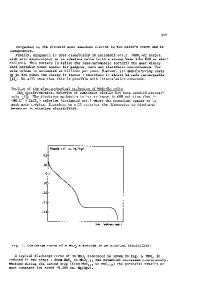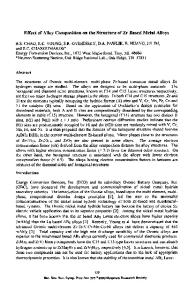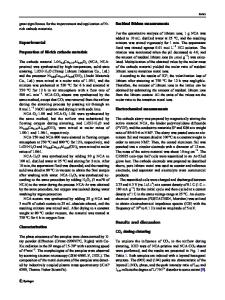Effect of metal composition on the structure of layer-structured cathode materials for Li-ion batteries
- PDF / 2,511,496 Bytes
- 10 Pages / 595.276 x 790.866 pts Page_size
- 38 Downloads / 305 Views
Effect of metal composition on the structure of layer‑structured cathode materials for Li‑ion batteries Yongseon Kim1 Received: 13 April 2020 / Accepted: 20 June 2020 © Springer-Verlag GmbH Germany, part of Springer Nature 2020
Abstract Layer-structured LiMO2 (M = Ni, Co, Mn, and dopants) is widely used as a cathode material for Li-ion secondary batteries. Ni-based LiMO2 is advantageous with respect to energy capacity and material cost compared to conventional L iCoO2, but its structural and thermal stabilities decrease with increases in Ni content. As a countermeasure for these decreases, the threecomponent design of M comprising Ni, Co, and Mn is used universally, and small amounts of foreign elements are often added to obtain doping or surface coating effects. The relation between the composition of M and structural characteristics of LiMO2 is investigated in this study. The features of defect generation, dopability of foreign elements, and formation of segregated secondary phases are analyzed by simulating phase diagrams based on density functional theory calculations. On this basis, a design strategy for the LiMO2 composition is provided, with a discussion on the proper selection of doping or coating materials to improve the cathodic properties. Keywords Li-ion battery · Cathode · Phase diagram · Simulation · Doping
1 Introduction The industry of Li-ion batteries (LIBs) is rapidly growing with the increasing application of LIBs in electric vehicles (EVs) [1–3]. However, the performance of LIBs still falls short of consumer expectations. In particular, advances in the development of positive electrode materials to achieve high-capacity and low-cost LIBs are urgently required [4–7]. Several materials such as L iFePO4, LiMn2O4, and LiNi0.5Mn1.5O4 have been developed to replace the conventional LiCoO2 (LCO) cathode, but their low theoretical capacities limit their applicability for high-capacity LIBs [7–11]. Therefore, the most realistic short- or mid-term solution for LIB cathodes is the replacement of Co by Ni in the layer-structured cathode material whose composition is expressed as LiMO2 (M = Ni, Co, Mn, and small amounts of dopants). With increases in the Ni content in this layer-structured cathode material, the available capacity at the commercial charging voltage (generally 4.2–4.3 V) is increased, while * Yongseon Kim [email protected] 1
Department of Materials Science and Engineering, Inha University, Incheon 22212, Republic of Korea
the cost of the raw material may be decreased [12–14]. Therefore, both higher energy storage density and lower battery cost, seemingly the most desirable properties in the current LIB industry, can be achieved by developing Nibased layer-structured cathodes. However, the problems of durability, thermal safety, high defect concentration, and low structural stability are significant in L iNiO2 (LNO) [14–17]; therefore, Co and Mn are mixed with Ni in the crystal, yielding a LiNixCoyMnzO2 (LNxCyMzO) cathode [18], with gradual increases in the proportion of
Data Loading...











